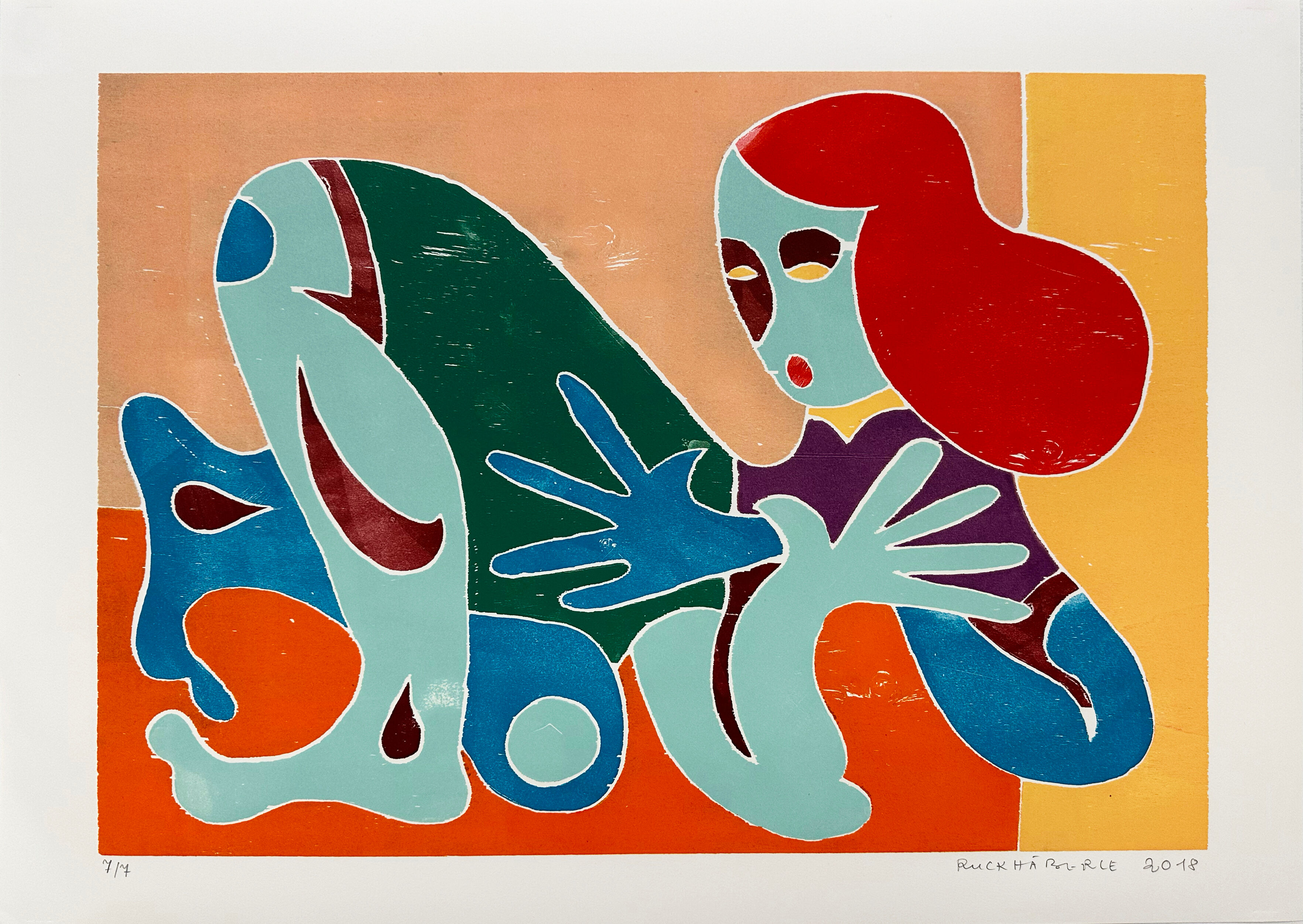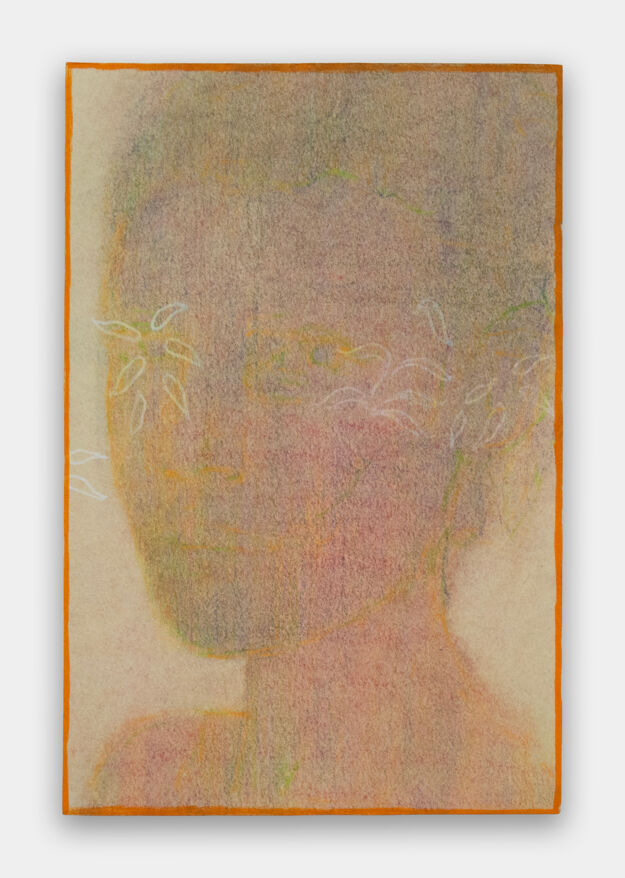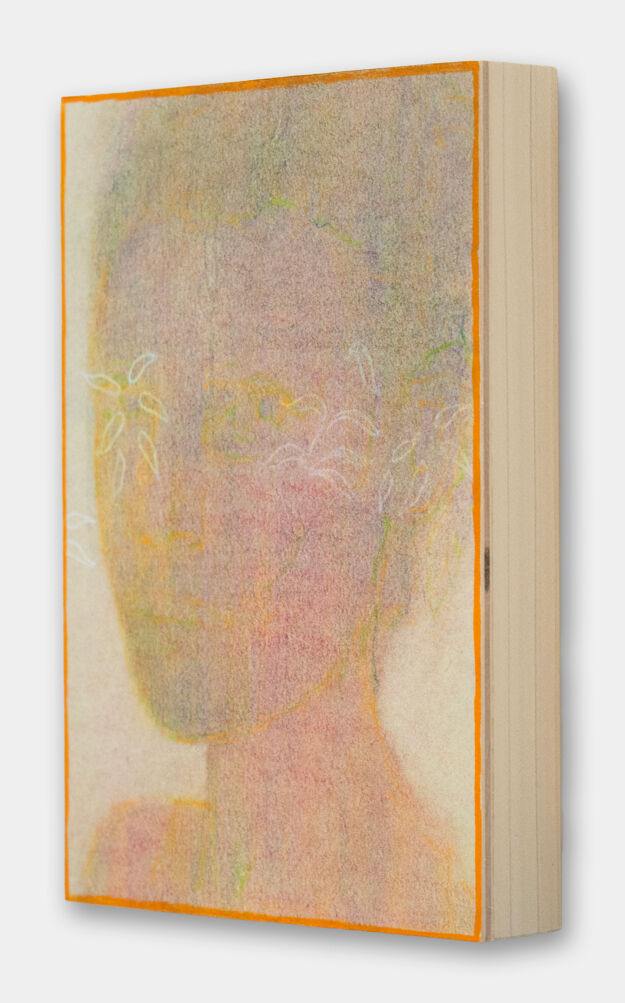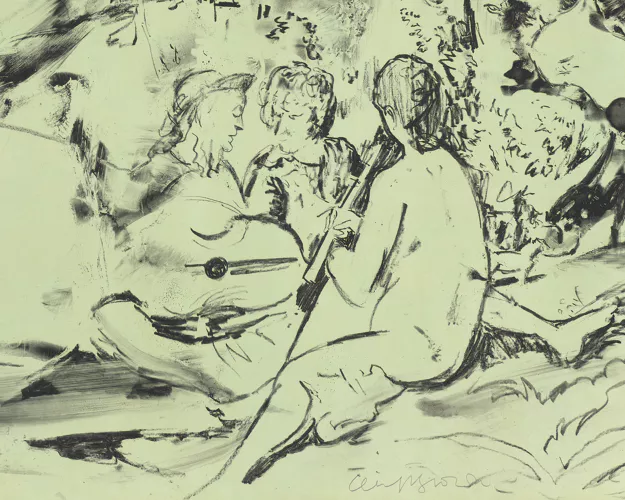About the artwork:
In these woodcuts, scenes that first appear flat emit a dynamic energy through the artist’s use of expressive body language, gestures, and geometric patterns. In a nod to the history and painting style of the 20th century, Ruckhäberle places his figures in classical poses that range from solo portraiture sittings to gatherings or other social situations.
Ruckhäberle’s colored prints feature a stylized vocabulary that has informed his paintings. Having co-founded the Leipzig-based publishing house LUBOK (a Russian word referring to satirical folk picture books popular in the 17th century), Ruckhäberle also began printing books on a 1950s rapid press with original wood blocks, which, in turn, has inspired the aesthetic of his prints and oil paintings.
Christoph Ruckhäberle makes paintings that, like those of the rest of his peers in the German painting movement known as The New Leipzig School, originally had a reputation for melancholy. He has since put this characteristic behind him by expanding his interest in bright color, humor, pattern, and ornament. With their awkward gestures and oddly twisted limbs, his subjects tend to resemble marionettes in a puppet show: frozen in time and mid-movement, isolated and bored. Imbued with a post-hippie vibe that exalts closeness to nature, a folk-art aesthetic, and a proto-European earthy contemplativeness, Ruckhäberle's figures always find new adventures while creating private mythologies in cult-like groups. Ruckhäberle’s colorful images of peasant women, circus figures, and free wanderers are curiously accessible, yet also feel confrontational, engaging, and challenging.
About the artist:
Christoph Ruckhäberle makes paintings with a reputation for melancholy—a quality often associated with artistic greatness. Before 2006, Ruckhäberle's pictures looked downright gloomy. Yet, unlike most of his contemporaries in the German painting movement known as The New Leipzig School, he put this characteristic behind him by expanding his interests in bright color, humor, pattern, and ornament. With their awkward gestures and oddly twisted limbs, his subjects tend to resemble marionettes in a puppet show: frozen in time and mid-movement, isolated and bored. Imbued with a post-hippie vibe that exalts closeness to nature, a folk-art aesthetic, and a proto-European earthy contemplativeness, Ruckhäberle's figures always find new adventures while creating private mythologies in cult-like groups. These colorful artworks combine sensual and earthly joie de vivre with their spiritual ideals in forms like peasant women, circus figures, or free wanderers. The resulting images are curiously accessible yet confrontational, engaging, and challenging, as well.
Christoph Ruckhäberle was born in 1972 in Pfaffenhofen, Germany, and lives in Leipzig, Germany. He graduated in Painting and Graphic Studies from Hochschule für Grafik und Buckhunst in Leipzig, Germany (2002), and in Animation studies at California Institute of the Arts in Santa Clarita, CA (1993).
Ruckhäberle has mounted solo exhibitions at Aki Gallery in Taipei, Taiwan (2022); the Museum der bildenden Künste in Leipzig, Germany (2019); Galerie Kleindienst in Leipzig, Germany (2019); Ampersand Gallery, Portland, OR (2018); Sorry we’re closed in Brussels, Belgium (2017); ZieherSmith in New York City, NY (2016); and others.
He has participated in recent group shows such as Forét at Arario Gallery in Seoul, South Korea (2021); Collection Revisited: Contemporary Art from Leipzig at Mdbk in Leipzig, Germany (2021); Lockdown Wall at Galleri Kleindienst in Leipzig, Germany (2020); The Leipzig Connection: 5th Biennial of Painting at the HDLU Croatian Association of Artists in Zagreb, Croatia (2019); and Heads at Galerie der Stadt Wels in Wels, Austria (2019).
Multiple catalogs and publications have been published on Ruckhäberle’s work, including Pattern No. 1 (artist book), Ampersand Editions, Portland, OR (2015); Polka (artist book), Lubok Verlag, Leipzig, Germany (2014); Christoph Ruckhäberle: Trapped in White Tiger Sanctum, Preface by Helmut A. Mueller, Lubok Verlag, Leipzig, Germany (2011); and more.
His art has been written about in publications such as It’s Nice That (2017), thehundreds.com (2015), Leipziger Volkszeitung (2014), The New York Times (2013), Apartamento (2013), and others.






